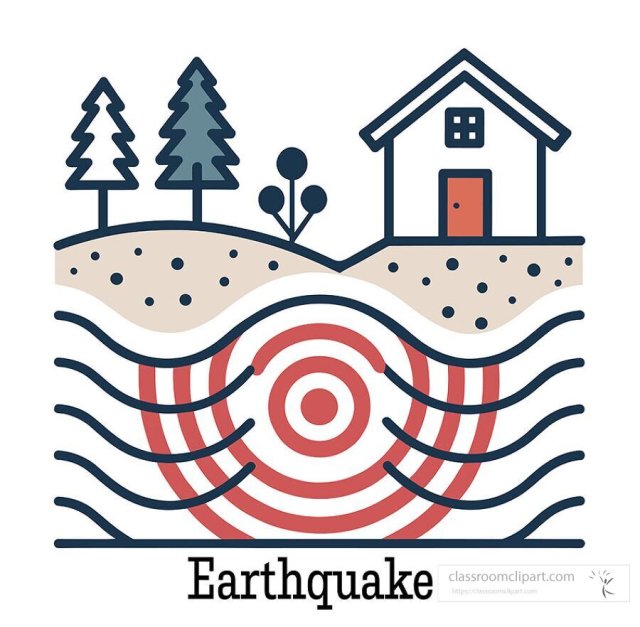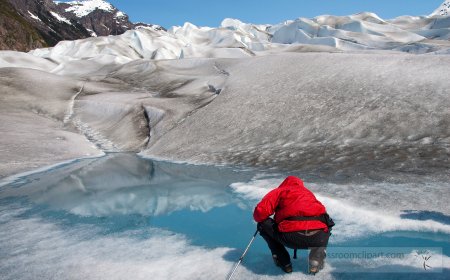Epicenter in Earthquakes for Students | Earth Science Guide
Learn about the epicenter of an earthquake the point on Earths surface above the focus discover how scientists locate it and why it matters for safety and science

🌟 Introduction
The epicenter is the point on the Earth's surface that is directly above where an earthquake begins. Earthquakes start deep underground at a spot called the focus or hypocenter, and the energy then travels outward in all directions as seismic waves. The epicenter is important because it is usually where the earthquake is felt the strongest and where the most damage can occur. By studying the epicenter, scientists can better understand earthquakes and help protect people through safety plans and stronger building designs.
🔍 What is the Epicenter?
The epicenter is the spot on the Earth's surface located directly above the earthquake's focus.
-
Focus (Hypocenter): Where the earthquake starts underground.
-
Epicenter: The surface location above the focus, often where shaking is most severe.
Scientists use seismographs placed around the world to calculate the epicenter.
🌍 Why is the Epicenter Important?
-
Locates Earthquakes: Helps scientists map where earthquakes happen.
-
Measures Damage: Shows where the strongest shaking occurs.
-
Saves Lives: Guides emergency response and rescue efforts.
-
Improves Safety: Helps cities design stronger buildings and prepare for earthquakes.
🧪 Everyday Examples
-
When an earthquake strikes near a city, the news reports the epicenter location so people know where it hit hardest.
-
Emergency crews rush to the epicenter area first because that's where damage is greatest.
-
Scientists compare epicenters around the world to track earthquake patterns.
✨ Fun Facts
-
The word epicenter comes from Greek, meaning "over the center."
-
Not all epicenters are on land-some are under the ocean, which can trigger tsunamis.
-
The largest earthquakes ever recorded had epicenters in Chile (1960) and Alaska (1964).
📌 Key Takeaways
-
The epicenter is on Earth's surface above the earthquake's focus.
-
It is usually the place with the strongest shaking and damage.
-
Scientists use seismographs to locate epicenters.
-
Knowing the epicenter helps with rescue and safety.
🐾 Kid-Friendly Summary
The epicenter is the spot on Earth's surface where an earthquake is felt the strongest. It's like the "target area" right above where the earthquake begins underground.
📚 Vocabulary Words
-
Epicenter: The point on Earth's surface above the earthquake's focus.
-
Focus (Hypocenter): The underground point where the earthquake starts.
-
Seismograph: A tool that records earthquake vibrations.
-
Seismic Waves: Waves of energy that move through the ground during an earthquake.
-
Tectonic Plates: Giant pieces of Earth's crust that move and cause earthquakes.
-
Magnitude: The measurement of earthquake strength.
-
Aftershock: Smaller quakes that follow the main earthquake.
🧠 Interactive Quiz on Epicenters
- What is the epicenter of an earthquake?
A. The place where animals live
B. The point on the surface above the focus
C. The deepest part of the ocean
D. The tool used to measure earthquakes - Where does an earthquake actually begin?
A. The epicenter
B. The focus
C. A volcano
D. A mountain - Which tool do scientists use to help find the epicenter?
A. Thermometer
B. Microscope
C. Seismograph
D. Compass - Why is the epicenter important to locate?
A. It tells scientists where damage is strongest
B. It helps measure the weather
C. It shows where fossils are buried
D. It tells us when a volcano will erupt - What can happen if the epicenter is under the ocean?
A. Earthquakes stop
B. Tsunamis may form
C. Volcanoes explode
D. Rivers dry up




















































